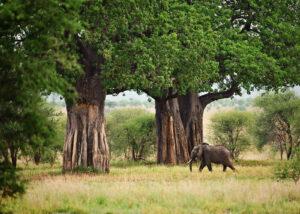Overview
Safaris in Africa are a popular way for travelers to experience the continent’s diverse and magnificent wildlife, including the “big cats” – lions, leopards, cheetahs, and sometimes even the African wildcat. These majestic creatures are among the most iconic and sought-after animals to spot on a safari. Here are some key points about big cat safaris in Africa:
There are several African countries where you can go on big cat safaris. Some of the most famous destinations include Kenya, Tanzania, South Africa, Botswana, Zambia, and Namibia. Each of these countries offers unique experiences and opportunities to see big cats in their natural habitats.
National Parks and Reserves: Many of the big cat sightings occur in national parks and wildlife reserves. For example, the Maasai Mara in Kenya, the Serengeti in Tanzania, and the Kruger National Park in South Africa are renowned for their abundant big cat populations.
The most common way to see big cats on safari is through game drives. These guided tours take you into the heart of the wilderness in specially equipped vehicles. Knowledgeable guides and trackers help locate and identify the big cats while ensuring safety.
Nocturnal big cats like leopards and lions are often more active at night. Some safari operators offer night drives, giving you a chance to witness their hunting and other nighttime behaviors.
Timing: The best time for big cat safaris varies depending on the destination. In general, the dry season is a good time for wildlife viewing, as animals are concentrated around water sources. The Great Migration in East Africa, where thousands of wildebeests and zebras move in search of fresh grazing, also attracts big cats.
There is a wide range of accommodations available, from luxury lodges to budget-friendly camps. Some lodges are strategically located near prime big cat territories, offering excellent opportunities
Joining a guided safari tour is a popular option, as experienced guides and tour operators know where to find big cats and can enhance your overall safari experience.
If you’re a wildlife photography enthusiast, be sure to bring the appropriate gear. Capturing these magnificent creatures on camera can be a rewarding experience.
Conservation and Responsible Tourism: Many safari operators and parks prioritize responsible tourism and contribute to the conservation of big cat species. Supporting these efforts helps protect these animals and their habitats.
Remember that wildlife sightings are not guaranteed on safaris, as animals are wild and can be elusive. Patience, respect for the animals and their environment, and a sense of wonder are essential when embarking on a big cat safari in Africa. It’s also essential to choose reputable operators who prioritize the well-being of both the wildlife and the local communities.
Destinations with the Big cat Safaris in Africa.
Kenya
About Kenya
Kenya ranks as one of the top countries in Africa that offers one of the unique safari experiences in the world. A safari in Kenya offers breathtaking natural sightings in one of the worlds most pristine environment and allows you to get up close and personal with some of Africa’s most sought-after animals. Combining this safari with great sights of the wildebeest Migration, the Mount Kilimanjaro hiking, makes Kenya’s safari experiences unique. The annual wildebeest Migration, is best viewed from the sites of the mara river then on the Kenya side from August and October when the river crossing has ended and have settled in Kenya for mean time.
The southern parks and reserves like the Masa mara and Amboseli National Park and worth exploring since they offer great wildlife sightings as well as the northern parts of Kenya’s private concessions and Sambura reserves where you can find the big cats among other large and small animals.
Why visit Kenya
Kenya should be in your safari bucket list for the tourist destinations you would love to visit in Africa, Kenya offers unique wildlife experiences with admixture of different and interesting cultures.
Kenya has got about 60 national parks and game reserves including; Masai mara, Tsavo national park are some of the well-known among other popular destinations offering unique wild game viewing safaris.
Meet the Masai culture in Kenya one of the unique and interesting culture as well as their traditional beliefs. During your tour in Kenya take time and meet the famous Masai people and learn more about them.
Kenya has got also a number of a rustic beaches for relaxation after an exiting safari tour in Kenya.
For nature and wildlife enthusiasts, you may opt to visit Kenya during the great wildebeest’s migration which is the natural and most fantastic time of the year whereby million of wildebeest, Zebras and gazelles are moving from the Serengeti national park in to Masai mara in Kenya and verse versa following the rain patterns.
The lakes of Africa’s Rift Valley connect three sizable catchments and cross numerous countries, the lakes include; lake Naivasha in Kenya, (soda lake), Lake Nakuru famously known for hosting the largest number of flamingos that you will find feeding in the shallows of the lake.
Tanzania
About Tanzania
Tanzania has got several numbers of tourist destinations ranging from the national parks to game reserves, Tanzania’s Serengeti national park offers top notch game viewing in dramatic setting of snow peak, volcanic craters and the Masai steppe of endless plains. Tanzania is known for its great number of wildlife including the big cats and large herds of wildebeest, zebras and Thompson gazelles that migrate annually with the Mara River dramatic crossing is the epic scene for the great migration.
Tanzania is naturally diversifying country from National parks, cultural diversity as well as its natural beauty such as Mount Kilimanjaro, Zanzibar, the Serengeti and the Ngorongoro crater all found in one country, for energetic and strong or adventurous hikers, you can go on multi -day walking safari in Serengeti National Park or Ruaha national park, or take on trek to the top of Mount Kilimanjaro, Africa’s highest peak and the world’s highest mountain. Also, while in Tanzania, do not miss to visit the exotic spice Islands of Zanzibar for an infusion of aromas and architecture in the stone town which is of the historical sites in Tanzania.
Why visit Tanzania
The great wildebeest Migration
Float Silently over the endless plains of Serengeti on balloon safari and view the animals below you with an eagle eye view.
Experience the pristine coral reefs and the sheer wall dives of the coast
Immerse your self on the rim of the scenic Ngorongoro crater one of the top safari’s destinations in Tanzania.
Catch the view of the beautiful epic Valley scenery and dramatic escarpment views
Best time to visit Tanzania for safari tour
Tanzania can be visited all year round depending on your interest and the nature of your safari. Tanzania has got two distinct rai y seasons which is April to May which are the month with the longer rains, November to December with the short rains. In general, the longer rains are characterized by heavy rainfall mostly in the afternoons which may lead to closing down of some safari camps whereas the short rains have occasional rainfall received.
In most safari areas in Tanzania, enjoy warm days and cool evenings which is experienced all year round. While in the Mount Kilimanjaro area, the temperatures drop to below the freezing point as well as along Mount Meru. Whereas the Indian ocean, Coast and lakeside receive hot and humid temperatures all year round.
The best time to visit Tanzania is when and where you want to go and what you would like to see. For the first time goers, the bet time to visit Tanzania is during the dry season when the wildlife viewing is easier and the park trails are drier. Despite the fact that you are visiting Tanzania for the first time, understanding the difference between the safari in the low season, the peak/high season is key so as you can know when best you can go on the safari.
Month by month Guide for Travelling to Tanzania.
Traveling to Tanzania can be an exciting and memorable experience, as the country offers diverse landscapes, wildlife, and cultural attractions. Here’s a month-by-month guide to help you plan your trip to Tanzania, taking into consideration the best times to visit, weather, and popular events:
January:
January is a great time to visit Tanzania. It’s the middle of the dry season, with warm and sunny weather, making it perfect for safaris and beach vacations.
Highlights: Go on a safari in Serengeti National Park or Ngorongoro Crater to witness the Great Migration, one of the most spectacular wildlife events on the planet.
February:
Similar to January, the weather is still excellent for safaris and beach holidays.
Continue your safari adventures in Tanzania’s national parks. Zanzibar and other coastal areas are also great for beach relaxation.
March:
The long rains typically begin in March, leading to lush green landscapes. While still possible to visit, be prepared for occasional rain showers.
Explore the cultural richness of Tanzania, including visits to local villages and historical sites like Stone Town in Zanzibar.
April:
The rainy season continues, and some lodges and camps may close for maintenance. However, it’s a budget-friendly time to visit due to lower prices.
Consider exploring southern Tanzania, where the rains are less intense. You can visit Ruaha National Park and Selous Game Reserve.
May:
The rains start to subside, and the landscape is still lush. It’s a good time to experience Tanzania without the peak tourist crowds.
Continue exploring the national parks, and go hiking in the Usambara Mountains.
June:
The dry season begins, with pleasant temperatures and clear skies. This is one of the best times for wildlife viewing.
Witness the wildebeest migration as they head towards the Grumeti River in the Serengeti.
July:
The dry season continues, and it’s the peak of the tourist season. Expect warm days and cool nights.
Safari in the Serengeti or visit Mount Kilimanjaro for trekking adventures.
August:
Dry and sunny, August is another prime month for safaris. Wildlife viewing is at its best.
Explore the Tarangire National Park, known for its large herds of elephants.
September:
Dry and comfortable, this is a fantastic time for both wildlife and cultural experiences.
Visit the Maasai communities for cultural immersion and go on a safari in the less crowded parks.
October:
The dry season continues, with warm temperatures. It’s a great time to combine wildlife safaris with beach holidays.
Explore the lesser-known parks like Katavi National Park or Mahale Mountains National Park.
November:
The short rains begin in November, and the landscape starts to turn green again.
Visit the quieter coastal areas like Pangani or Bagamoyo and enjoy the fresh vegetation.
December:
The short rains continue, but it’s still possible to visit. Prices are lower, and the country is less crowded.
Explore the historical sites in Zanzibar and take part in local festivals.
Remember that specific events and festivals may vary from year to year, so it’s a good idea to check the latest information before planning your trip. Additionally, consider factors like your interests and the activities you want to engage in when choosing the best time to visit Tanzania.
Request Quote
Fill in and send the safari request form, we shall respond as soon as we receive your message. You can also reach us on Whats-app Number: +256753750983 for urgent requests.

